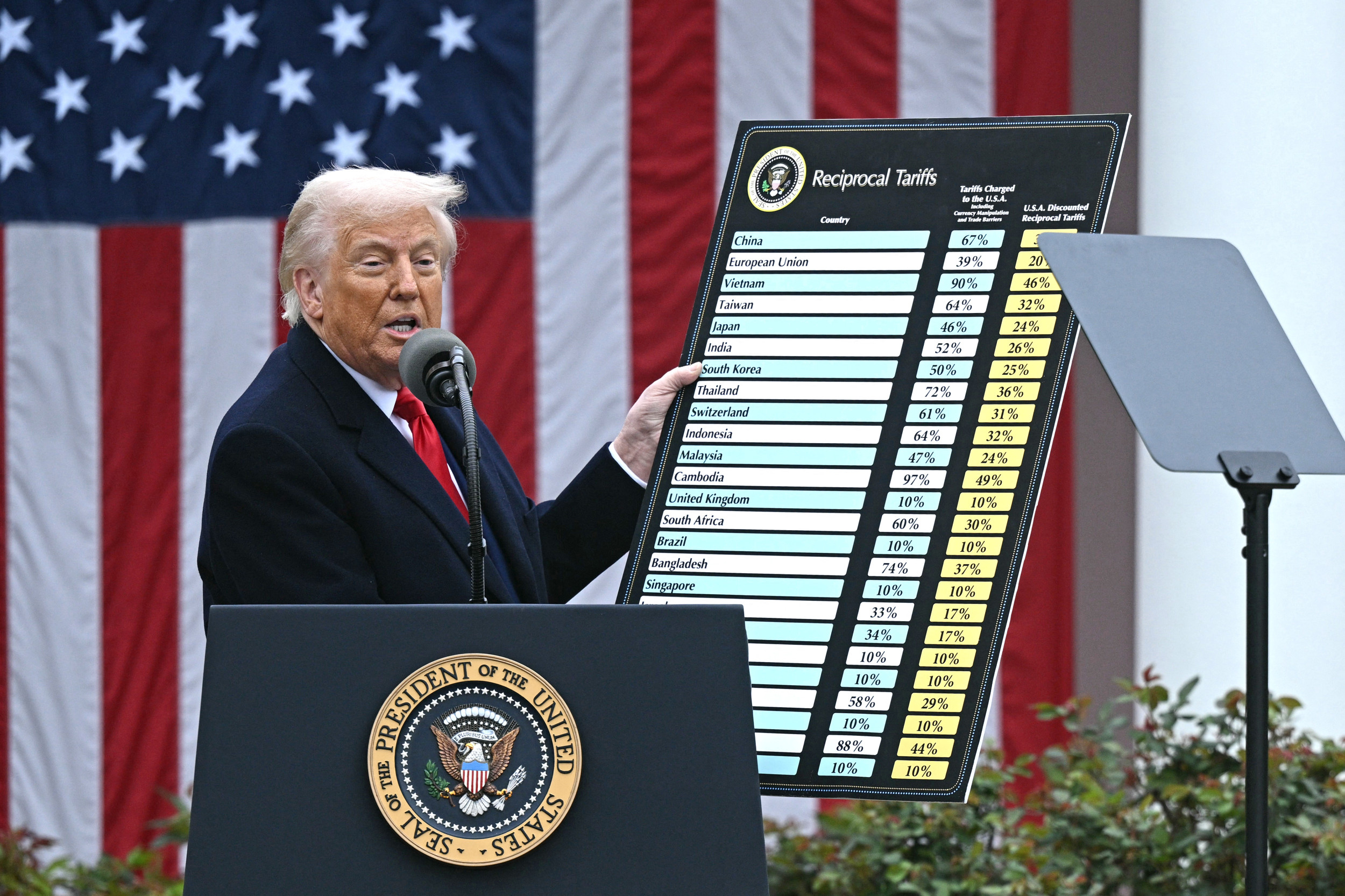Tensions between the world’s two largest economies are climbing again as President Trump threatens to slap an additional 50% tariff on Chinese goods. In response, Chinese President Xi Jinping has taken a hardline stance, with Beijing accusing Washington of “blackmail” and pledging to “fight to the end.” The high-stakes standoff is fueling fears of a prolonged trade war that could rattle markets and impact global supply chains.
What to Know:
- Trump threatened new tariffs unless China reverses its retaliatory levies.
- Beijing responded by vowing to escalate if the U.S. follows through.
- Chinese officials called the U.S. move “blackmail.”
- Analysts say Xi can’t afford to look weak amid rising nationalism.
- China’s state-run media and markets have rallied in support of Xi’s stance.
- A meeting between Trump and Xi appears increasingly unlikely.
Stay with Newsweek for the latest updates.
U.S. and China clash again as global leaders react to escalating tariffs
Tensions between the U.S. and China surged Tuesday as President Donald Trump threatened an additional 50% tariff on Chinese goods, prompting a sharp rebuke from Beijing. In response, China vowed to “fight to the end,” accusing the U.S. of blackmail and vowing countermeasures.
The Chinese Commerce Ministry said the latest tariff threats expose the U.S.’s coercive tactics. Beijing’s foreign ministry also criticized Washington for lacking sincerity in its approach to dialogue, saying future talks must be based on “equality and mutual respect.”
Meanwhile, market turmoil triggered by the escalating trade war prompted global leaders to take action. Japan’s Prime Minister Shigeru Ishiba formed a task force to mitigate the fallout of the 24% tariffs levied on Japanese exports. India’s foreign minister urged progress on a trade deal with the U.S., while Malaysian Prime Minister Anwar Ibrahim advocated for “quiet engagement” through ASEAN channels.
Hong Kong’s leader John Lee condemned the tariffs as “ruthless,” vowing to expand free trade ties and align more closely with mainland China. As the trade dispute deepens, more countries are now seeking ways to minimize economic damage and navigate an increasingly fractured global trade environment.
How much does China charge the U.S. in tariffs?
Beijing recently announced a sweeping 34% tariff on all U.S. goods, mirroring the latest escalation from Washington. This comes on top of earlier 10-15% tariffs China imposed earlier this year on U.S. agricultural and energy exports. According to Morgan Stanley economist Robin Xing, the move has raised the U.S. average tariff rate on Chinese goods to as high as 65%. While the full cost to American exporters depends on the product, analysts say the new round of duties significantly intensifies the financial strain on both sides.
China’s Ministry of Foreign Affairs said the country “will continue to take resolute measures” to protect its interests. That includes broader restrictions on U.S. companies operating in China and new export controls on rare earths and dual-use technology.
Beijing’s retaliation marks a notable shift away from earlier restraint, raising the chances of prolonged tariff escalation with no near-term deal in sight.
Donald Trump’s polling after ‘liberation day’ is disastrous for Republicans
U.S. President Donald Trump answers a reporter’s question in the Oval Office of the White House on April 7, 2025 in Washington, DC.
Kevin Dietsch/Getty Images
Amajority of American adults are deeply skeptical about President Donald Trump’s new tariff policy according to a new YouGov survey, with more than half of those polled saying they regard the policy as “the largest peacetime tax hike in U.S. history.”
Newsweek contacted the Republican National Committee for comment via online inquiry form on Tuesday outside of regular office hours.
The YouGov poll is a sign that the series of tariffs Trump has imposed since his second inauguration in January might have backfired politically and damaged the president and the Republican Party.
On Wednesday April 2, which Trump dubbed “Liberation Day,” the president announced extensive new tariffs which credit ratings agency Fitch said will take them to their highest overall level since 1910.
Trump imposed a “baseline” 10 percent levy on all imports along with what he called “discount reciprocal tariffs” on dozens of countries, including a 34 percent levy on China, 25 percent on South Korea and 20 percent on the European Union.
This was on top of tariffs Trump announced on China, Mexico and Canada earlier in his presidency, and on Monday the president said the levy on Beijing would rise by an additional 50 percent in response to Chinese counter tariffs.
YouGov surveyed 1,139 adult U.S. citizens between April 3 and 6 with a four percent margin of error. The poll found 51 percent of Americans agreed that the tariffs are “the largest peacetime tax hike in U.S. history,” split between 30 percent who said they “strongly agree” and 21 percent who “somewhat agree.” By contrast, only 20 percent said they disagreed either strongly or somewhat, with the remainder not sure.


